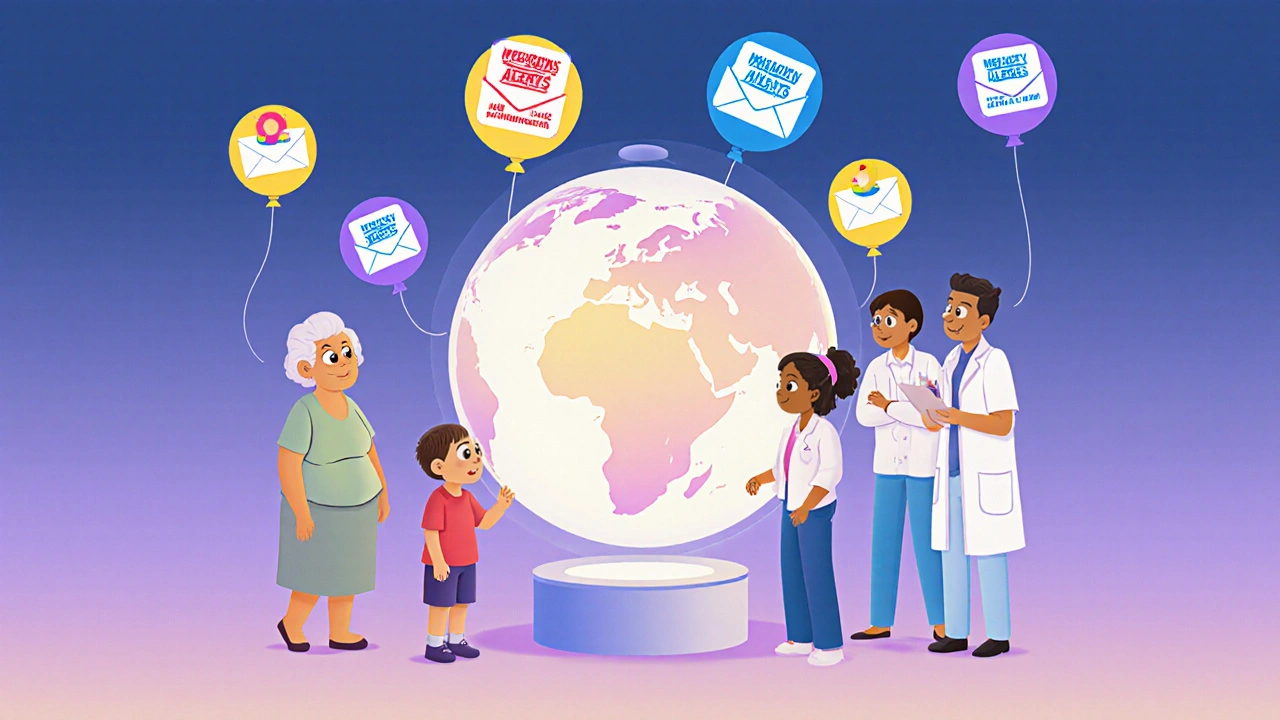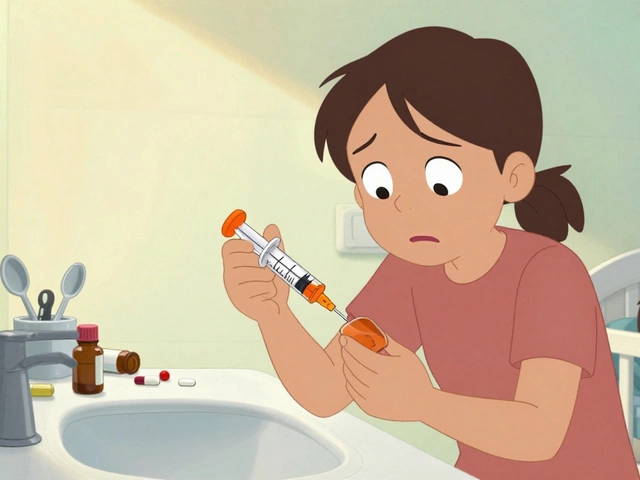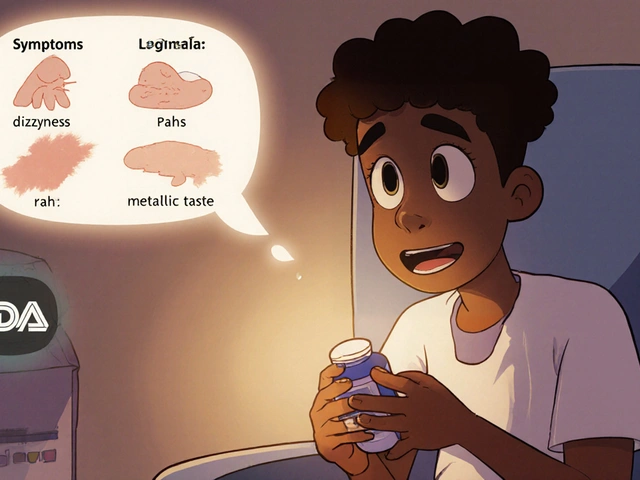Every year, millions of people take medications that help them live better, longer lives. But not all risks are known when a drug first hits the market. Side effects can show up months-or even years-later. That’s why staying informed about global medication safety news isn’t just helpful-it’s essential. Whether you’re a patient, caregiver, or healthcare worker, knowing where to look and how to act can prevent harm before it happens.
Start with the World Health Organization (WHO)
The WHO is the central hub for global drug safety information. Every year, they release updates on emerging risks, policy changes, and new guidelines. In May 2025, they published a major update on controlled medicines-like opioids, benzodiazepines, and ketamine-aiming to balance access with safety. This isn’t just bureaucracy; it affects real people trying to manage chronic pain or mental health conditions without falling into misuse.
Sign up for their Medicines Safety email alerts. These aren’t marketing emails. They’re direct notifications when new safety signals emerge, like a sudden spike in liver damage linked to a common antibiotic or a new warning about drug interactions in older adults. These alerts are translated into over 30 languages and sent to national health agencies worldwide. If you’re a clinician, your hospital should be receiving them-but if you’re a patient, you can sign up too.
Follow #MedSafetyWeek-It’s Happening Right Now
The first week of November each year is #MedSafetyWeek. In 2025, it ran from November 3 to 9, marking its 10th anniversary. This isn’t just a hashtag. It’s a coordinated global campaign led by the Uppsala Monitoring Centre (UMC), involving 117 countries and 131 organizations. The theme this year? “We can all help make medicines safer.”
During this week, health agencies release easy-to-read guides, posters, and mobile tools. The UK’s MHRA pushes its Yellow Card app-used to report side effects from medicines, vaccines, even herbal products. Australia’s health commission saw a 25% jump in staff reporting after using their #MedSafetyWeek toolkit. In pharmacies across Canada and Germany, pharmacists handed out QR codes linking directly to reporting forms. These aren’t theoretical efforts. They’re proven to work.
Don’t wait for November. Bookmark the UMC website. Sign up for their campaign updates starting in August each year. You’ll get free downloadable materials-posters for your clinic, social media graphics, even checklists for patients to track symptoms.
Use Official Reporting Systems-Your Report Matters
Here’s the hard truth: fewer than 10% of side effects are ever reported. That means drug safety agencies are flying blind on most reactions. If you experience something unusual-dizziness after a new blood pressure pill, a rash after a vaccine, confusion after a painkiller-you’re not overreacting. You’re helping.
Every country has its own system. In the U.S., it’s the FDA’s MedWatch. In the UK, it’s the Yellow Card. In Canada, it’s Health Canada’s Adverse Reaction Monitoring Program. In New Zealand, it’s the Centre for Adverse Reactions Monitoring (CARM). All of them are free, anonymous, and accessible online or via app.
What to report? Anything out of the ordinary. Not just hospital-level emergencies. Even if you think it’s “just a headache” or “I thought it was the flu.” If it happened after taking a medicine, report it. The UMC says even a single report can trigger a deeper review. And yes-your report gets added to a global database used by regulators, researchers, and manufacturers to spot patterns.

Check ISMP’s Best Practices-They’re Practical, Not Theoretical
The Institute for Safe Medication Practices (ISMP) doesn’t just issue warnings. They give you tools to fix problems. Their 2025-2026 Targeted Medication Safety Best Practices for Community Pharmacy are a goldmine. One section? Weight-based dosing verification for kids. Sounds simple. But in October 2024, a pharmacist in Ohio used their checklist to catch a 10x overdose error on a child’s antibiotic. That’s the kind of detail that saves lives.
These aren’t vague suggestions. They’re step-by-step workflows. For example: “Always double-check the child’s weight in kilograms before calculating dose.” “Use a separate form for vaccine administration that requires two signatures.” “Never return opened medications to stock.”
Download their implementation worksheets. If you work in a pharmacy, clinic, or hospital, use them. If you’re a patient, ask your provider if they follow ISMP’s guidelines. Most don’t know they exist. But if you bring them up, you’re pushing for better safety.
Watch Out for Misinformation-It’s Getting Worse
One of the biggest threats to medication safety right now isn’t a bad drug-it’s bad information. The ECRI/ISMP 2025 Top 10 Patient Safety Issues list put “medical misinformation on social media” at #3. Vaccine myths, fake drug warnings, AI-generated “doctor advice” on TikTok and Facebook are driving real harm.
One study found that in regions with high social media use, false reports of side effects spiked by 18%. That doesn’t mean the drug is dangerous. It means people are scared-and scared people stop taking needed meds. A parent might skip their child’s flu shot because of a viral post. An elderly person might ditch their blood thinner after reading a blog claiming it causes dementia.
Always verify. If you see a shocking claim about a medication, check WHO, FDA, or your national health agency’s website. Don’t trust influencers. Don’t trust anonymous Reddit threads. Trust official sources. If you’re unsure, call your pharmacist. They’ve seen this before.

Know the Numbers-Why This System Exists
Medication errors cost the global health system $42 billion a year. That’s more than the GDP of 80 countries. In high-income nations, health agencies get about 350-400 adverse event reports per million people each year. In low-income countries? Just 5-10 per million. That gap isn’t just unfair-it’s deadly. It means drugs are being used in places where no one is watching for side effects.
That’s why WHO’s 2024 Global Patient Safety Report calls for expanding pharmacovigilance in 50 more low- and middle-income countries by 2030. Your awareness helps. When you report a side effect, you’re not just protecting yourself. You’re helping build a safer system for people in places with no local safety network.
What to Do Next: A Simple Action Plan
You don’t need to become a drug safety expert. But you do need to take three small steps:
- Subscribe to WHO’s Medicines Safety email alerts.
- Download your country’s adverse reaction reporting app (Yellow Card, MedWatch, CARM, etc.).
- Share #MedSafetyWeek materials with your doctor, pharmacist, or family this November.
If you’re a healthcare worker, add ISMP’s 2025-2026 Best Practices to your team’s training. Use their worksheets. Track your progress. ISMP found early adopters reduced errors by 15-22% in just six months.
Medication safety isn’t about fear. It’s about control. The more you know, the more power you have-to ask questions, to report concerns, to protect yourself and others. And right now, the tools are there. You just need to use them.






Nicole M
November 12, 2025 AT 09:55I never realized how much I was ignoring side effects until I started using the Yellow Card app after my mom had that weird reaction to her new statin. Now I report everything-even if it’s just a headache that lasted two days. Turns out, those little things matter more than you think.
manish kumar
November 13, 2025 AT 20:05Look, I’m from India, and we don’t have the same infrastructure as the US or UK, but that doesn’t mean we’re blind. I’ve seen people stop their diabetes meds because some guy on WhatsApp said metformin causes cancer. It’s not just about access to info-it’s about trust. WHO’s alerts are gold, but they need to be pushed through local clinics, not just emailed to hospitals. We need community health workers translating these into regional languages and showing up at tea stalls with printed flyers. That’s how you reach people who don’t check emails. The system works, but only if it meets people where they are.
Arpita Shukla
November 14, 2025 AT 18:28Actually, the WHO updates are often delayed by months because of bureaucratic approval cycles. The real action is in the UMC’s individual case reports-those are live, unfiltered, and updated daily. And if you think the Yellow Card app is the best tool, you’re missing that Australia’s system integrates with their national health records, so it auto-fills patient history. The US system? Still uses a 1990s-era web form. Don’t get me started on how many people give up after the third page of dropdown menus.
Benjamin Stöffler
November 16, 2025 AT 08:33And yet… we still treat pharmacovigilance as a footnote… a bureaucratic afterthought… a checkbox… when it is, in fact, the silent guardian of every pill we swallow… every injection we receive… every dosage we trust without question… We outsource our survival to chemistry… and then we blame the drug… when the real failure is our collective apathy…
Mark Rutkowski
November 17, 2025 AT 01:09There’s something beautiful in how a single person reporting a weird rash can ripple across continents and save someone’s life in a village where no doctor’s ever heard of that drug. It’s not about being an expert-it’s about being human. You don’t need a medical degree to care. You just need to care enough to hit ‘submit.’ That’s the quiet revolution right there: ordinary people becoming invisible watchdogs for global health.
Ryan Everhart
November 17, 2025 AT 05:09So you’re telling me the solution to a $42 billion problem is… to ask people to download an app? Wow. That’s like solving climate change by telling people to recycle soda cans. The system’s broken. Reporting tools are clunky, data’s siloed, and no one’s actually held accountable when drugs kill people. But hey, at least we’ve got a hashtag.
David Barry
November 18, 2025 AT 17:41Let’s be real-the 10% reporting rate isn’t because people are lazy. It’s because 90% of side effects are either ignored, misattributed, or dismissed as ‘normal.’ I’ve seen patients get told ‘it’s just aging’ when they had a drug-induced arrhythmia. Reporting only works if you’re not gaslit by your own doctor. Until clinicians are trained to take patient reports seriously, this whole system is performative.
Alyssa Lopez
November 20, 2025 AT 08:33WHO? UMC? Please. This is why America needs to stop listening to global bureaucracy. We have the FDA, and they’re the best in the world. Why should we care about some EU or Indian report? We’ve got our own data, our own standards. And if some guy in Bangalore thinks his headache is from a drug, that doesn’t mean it is. We don’t need global noise-we need American precision.
Alex Ramos
November 20, 2025 AT 21:36Just wanted to say: I’m a pharmacist in Ohio. We started using ISMP’s weight-based dosing checklist last year. We caught 3 near-misses in 6 weeks. One was a 5-year-old who was supposed to get 2mL of amoxicillin but the script said 20mL. The pharmacist caught it because she used the checklist. No heroics. Just a damn form. Download it. Print it. Tape it to your counter. It’s that simple. And yes, I use emojis sometimes. 😊
Elizabeth Buján
November 21, 2025 AT 23:40I used to think medication safety was just for doctors. Then my grandma went into the hospital after mixing her blood thinner with a new herbal tea she bought online. She didn’t know it could interact. Now I print out the WHO safety alerts, translate them into Spanish for her, and read them aloud every Sunday. It’s not about being perfect. It’s about being present. And yeah, I misspell things sometimes. But I’m trying.
Andrew Forthmuller
November 23, 2025 AT 18:30Report everything. Even the weird ones. I reported a weird taste after my antidepressant. Turned out it was a batch issue. No one else noticed. But they recalled it. So yeah. Just report.